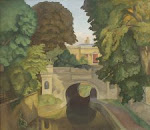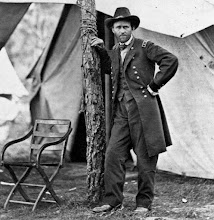The following poem is by Laurence Whistler (1912-2000), who started out as a poet and later became a glass engraver (although he did not give up poetry). His brother was the artist Rex Whistler (1905-1944), who is perhaps best known for his book illustrations. The poem is wonderfully humorous, but -- like the best humorous poems -- goes beyond laughs.
A Form of Epitaph
Name in block letters None that signified
Purpose of visit Barely ascertained
Reasons for persevering Hope -- or pride
Status before admission here Regained
Previous experience Nil, or records lost
Requirements Few in fact, not all unmet
Knowledge accumulated At a cost
Plans Vague Sworn declaration Not in debt
Evidence of departure Orthodox
Country of origin Stateless then, as now
Securities where held In one wood box
Address for future reference Below
Is further time desired? Not the clock's
Was permit of return petitioned? No
Laurence Whistler, Audible Silence (1961). The poem is -- lovely touch! -- a sonnet.
Laurence Whistler
Window in St. Nicholas Church
Moreton, Dorset
Subscribe to:
Post Comments (Atom)




6 comments:
Thank you for this poem - I had no idea Laurence Whistler also wrote poetry. We came across this church last year when we were looking for T.E. Lawrence's grave there. The engraved windows were magical - so etherial and delicate.
frances thomas: thank you for visiting and commenting again. You are fortunate to have been able to see the church! I have never seen it, but I hope to visit some time. I understand that Lawrence's cottage -- Clouds Hill -- is near Moreton as well.
Yes, Clouds Hill is bearby. And Hardy's cottage too.
Ah, now it makes sense! I recall reading that Lawrence, Siegfried Sassoon, and Edmund Blunden joined Hardy for Sunday afternoon tea at Hardy's house. Sassoon and Blunden were staying at a cottage nearby as well, and visited Hardy almost daily.
Thank you, frances thomas.
I meant of course nearby, as no doubt you guessed. Sorry - Google seems to make it hard to reply to blogs and I lose concentration on the spelling.
Clouds Hill is extraordinary - you feel that Lawrence has just stepped out of the door and will be back any moment. Hardy's cottage has been done over by our National Trust in full heritage mode and lost any character.
William Barnes also lived nearby
frances thomas: thank you again. Your mention of Barnes rang a bell. I checked in Barry Webb's biography of Edmund Blunden, and found the following: 'Edmund took a week's holiday with Sassoon, staying at William Barnes's old house, the Rectory, at Came -- a simple, whitewashed, thatched-roof building.' (Page 135.) This was the same visit during which the afternoon tea with Lawrence and Hardy took place. I see from the Internet that Came is also known as Winterborne Came. (Lovely name!)
This area is definitely on my 'must-visit' list the next time I make it over to England.
Thanks again.
Post a Comment